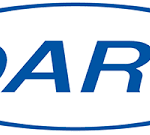In today’s rapidly evolving world, technology is at the forefront of innovation, constantly reshaping industries and driving progress. One such emerging concept is Leomorg, a term gaining traction in various fields. Whether you’re a seasoned professional or just starting to explore this topic, understanding Leomorg’s significance is essential. This article will dive deep into what Leomorg is, its key concepts, its applications, and the challenges associated with it.
We will explore how Leomorg is revolutionizing industries, offering new opportunities, and providing solutions to age-old problems. By the end of this guide, you’ll have a solid grasp of Leomorg’s importance and how it can be applied in practical scenarios to maximize its potential.
Detailed Explanation of Key Concepts
What is Leomorg?
At its core, Leomorg refers to a specific technological or theoretical framework designed to address certain needs in modern systems. It integrates multiple elements, such as data analysis, predictive algorithms, and optimization methods, into a cohesive model. The term Leomorg could span various sectors like artificial intelligence, business intelligence, or even advanced machine learning, though its specific application might vary.
To truly understand Leomorg, we must dissect its key components:
- Data Integration – Leomorg aggregates data from different sources, streamlining the process of combining disparate sets of information into one coherent structure.
- Predictive Modeling – The framework allows for predictive analytics, making it possible to forecast outcomes based on historical data, enhancing decision-making processes.
- Optimization Algorithms – Leomorg incorporates algorithms that focus on finding the best solutions to complex problems, ensuring efficiency and resource optimization.
Together, these elements create a powerful toolkit that can be applied in a variety of fields, from healthcare to finance and beyond.
Core Features of Leomorg
The strength of Leomorg lies in its versatility and adaptability. Some of the defining features include:
- Scalability: Leomorg is designed to scale efficiently, handling growing datasets without sacrificing performance.
- Real-time Processing: The ability to process data in real-time enables faster decision-making.
- Customizability: Users can modify the framework to meet specific business or technological needs, making it suitable for a wide range of applications.
Importance and Benefits of Leomorg
Why Leomorg Matters
Understanding the significance of Leomorg goes beyond its technological features. It plays a crucial role in shaping industries, enabling businesses to stay ahead of competitors, and driving innovation. Below are some of the reasons why Leomorg is a game-changer:
- Improved Decision Making: With the ability to analyze large volumes of data and provide predictive insights, businesses can make more informed, data-driven decisions.
- Enhanced Efficiency: Leomorg’s optimization capabilities reduce the time and resources spent on problem-solving, leading to more efficient operations.
- Cost Savings: By improving processes and offering predictive insights, Leomorg allows businesses to anticipate challenges and mitigate risks before they escalate.
- Fostering Innovation: The flexibility of Leomorg allows for creativity in its application, resulting in groundbreaking innovations across multiple industries.
Key Benefits
- Automation of Routine Tasks: Leomorg automates various processes, freeing up time for human workers to focus on strategic tasks.
- Data-Driven Insights: By using advanced algorithms to interpret data, businesses can identify trends and opportunities they may have missed otherwise.
- Scalability and Adaptability: As businesses grow and evolve, Leomorg grows with them, making it a long-term solution for improving business operations.
Applications and Use Cases of Leomorg
Leomorg is applicable across various sectors, from healthcare to finance and manufacturing. Let’s explore some real-world examples and use cases where Leomorg has made a significant impact.
1. Healthcare
In healthcare, Leomorg is used to optimize treatment plans, predict patient outcomes, and streamline hospital management. By analyzing large datasets, Leomorg can help identify the most effective treatments for patients based on their medical histories and current conditions. Additionally, predictive models allow healthcare providers to forecast patient demand, manage resources, and reduce wait times.
For example, in a hospital setting, Leomorg can be integrated with patient management systems to suggest personalized treatment plans for patients. This not only improves patient care but also helps reduce operational costs and enhance efficiency.
2. Finance
In the finance sector, Leomorg helps institutions make better investment decisions, manage risks, and optimize portfolio performance. Through predictive modeling, it forecasts market trends, enabling investors to make data-driven decisions. Moreover, Leomorg aids in fraud detection by analyzing transaction patterns and identifying unusual activities.
For instance, banks use Leomorg to predict the likelihood of loan default by analyzing past credit behaviors, customer profiles, and market conditions. This enables financial institutions to offer better rates and mitigate financial risks.
3. Supply Chain and Manufacturing
Leomorg optimizes supply chain management by predicting demand fluctuations and streamlining inventory management. By integrating data from multiple sources, it offers valuable insights that can improve forecasting accuracy, reduce waste, and minimize stockouts.
A major retail company, for example, can use solution to predict shifts in consumer demand, optimizing inventory levels and ensuring the right products are in stock at the right time. This ultimately boosts sales and enhances customer satisfaction.
4. Retail and E-commerce
In the retail industry, Leomorg powers personalized recommendations, dynamic pricing models, and inventory management systems. By analyzing customer behavior and preferences, retailers can create tailored shopping experiences, leading to higher conversion rates and customer retention.
Amazon is a prime example of using advanced predictive analytics (similar to Leomorg) to recommend products based on a user’s browsing history and purchase behavior. This highly personalized shopping experience is a critical component of their success.
Challenges and Solutions
Despite its many benefits, the adoption and implementation of solution are not without challenges. Below are some common obstacles businesses may face and potential solutions.
1. Data Quality and Availability
The effectiveness of solution relies heavily on the quality of the data it processes. Inaccurate, incomplete, or outdated data can result in faulty predictions and misguided decisions.
Solution: Businesses should invest in data cleansing and validation tools to ensure the accuracy and reliability of the data before feeding it into the solution framework.
2. Integration with Existing Systems
For businesses to fully benefit from solution, it must integrate seamlessly with existing technological infrastructure. Many companies struggle with integrating new tools into legacy systems.
Solution: Companies should work with experienced IT professionals who can customize and integrate solution within their current systems, ensuring smooth data flow and minimal disruption.
3. Understanding Complex Algorithms
Leomorg involves complex algorithms, which may be difficult for some professionals to understand or manage.
Solution: Offering proper training and support for staff members ensures that they can use solution effectively. Additionally, businesses should consider collaborating with experts who specialize in data science and machine learning.
Conclusion
In conclusion, Leomorg is an innovative and powerful tool that has the potential to transform industries, drive efficiencies, and solve complex problems. Its applications in healthcare, finance, retail, and manufacturing showcase its versatility and effectiveness across various sectors.
As businesses continue to embrace data-driven solutions, the importance of frameworks like solution will only increase. While there are challenges to overcome in terms of data quality, integration, and complexity, the benefits far outweigh the hurdles. By adopting solution, organizations can stay ahead of the competition, optimize operations, and unlock new opportunities.




